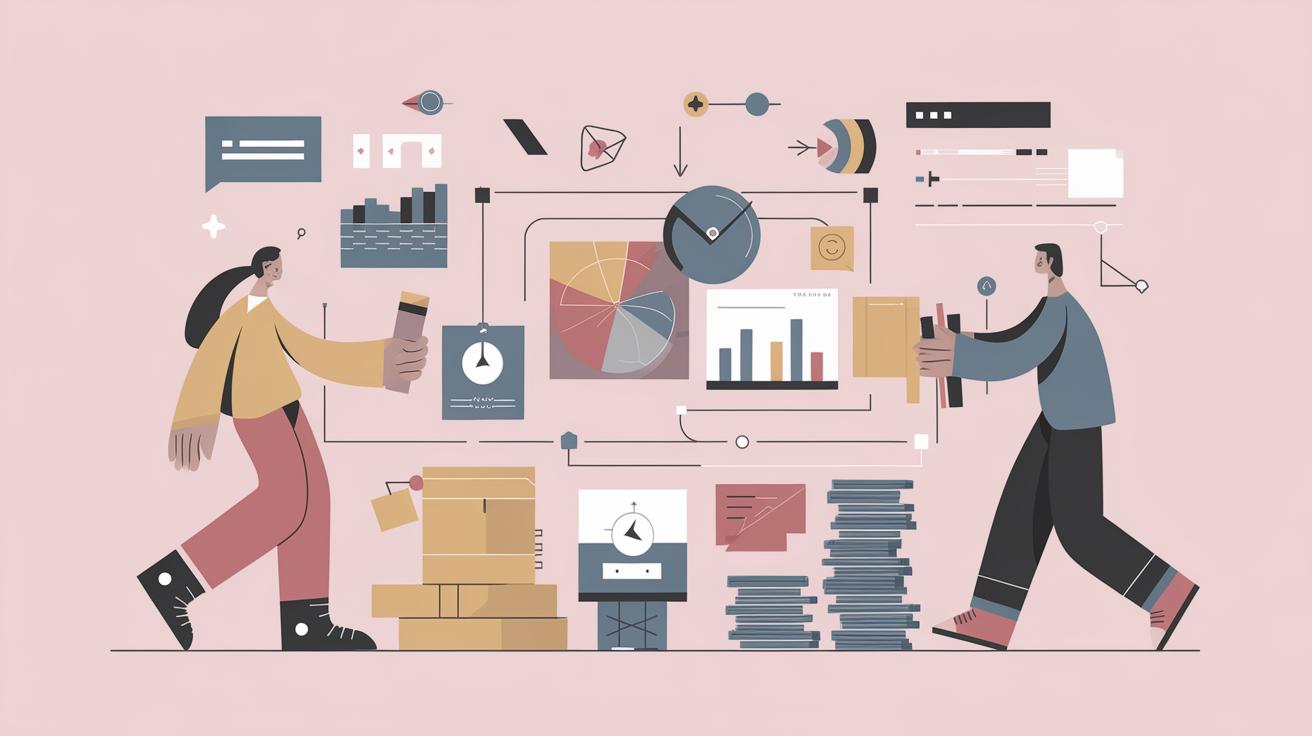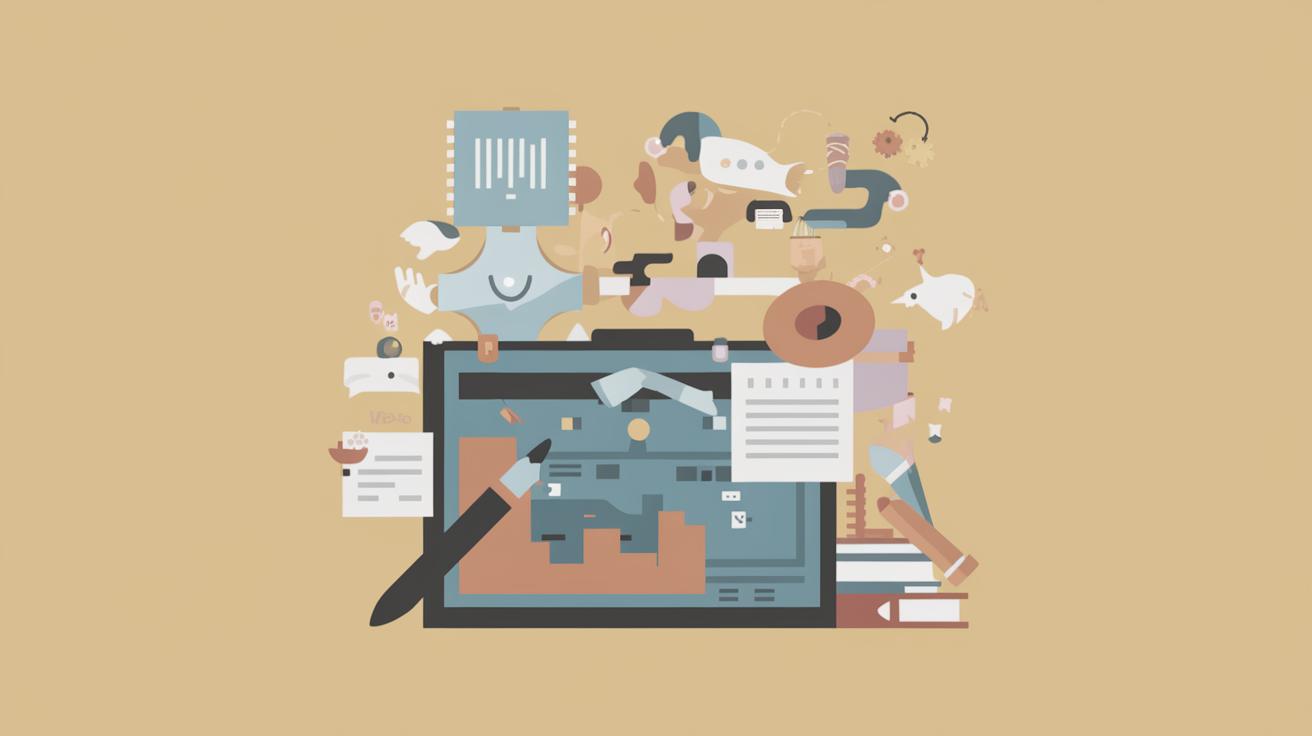The Essentials of Motion Graphics Design
Motion graphics design is an essential component of modern digital storytelling and marketing strategies.
In this comprehensive guide, we delve into what motion graphics design entails,
exploring key differences between motion graphics and animations.
We will discuss ten critical skills a motion graphics designer should possess,
spanning from technical software expertise to storytelling and color theory.
Moreover, we will highlight the benefits motion graphics provide in marketing and how you can identify a designer that fits your brand’s needs.
Through detailed explanations and insights, you will gain a firm understanding of the nuances in motion graphics design
and the impact these eye-catching visuals can have on your audience.
What is Motion Graphics Design?
Motion graphics design combines graphic design and animation to create the illusion of motion or rotation.
Typically applied in multimedia projects, the purpose of motion graphics is often to convey complex ideas in a straightforward and visually appealing manner.
Unlike traditional animation that primarily focuses on characters and storytelling, motion graphics emphasize the use of text and graphical elements for informational or promotional purposes.
The versatility of motion graphics allows designers to produce captivating visual content for video productions, websites, advertisements, and social media.
The motion graphics process involves conceptualizing, designing, and animating various elements.
Designers must consider factors such as timing, pacing, and transition effects to ensure the visuals effectively communicate the intended message.
As a core aspect of motion design, professionalism and creativity are essential to stand out in the increasingly competitive digital landscape.
What’s the Difference Between Motion Graphics and Animation?
While both motion graphics and animation involve creating the illusion of motion for visual storytelling, they differ in scope and application.
Animation is a broad term that includes various styles and techniques, primarily focusing on character-driven narratives.
Animators meticulously craft sequences that bring imaginary worlds to life, often involving complex character rigging and intricate motion paths.
In contrast, motion graphics typically center around abstract shapes, texts, and compositing effects.
The primary goal is not always to tell a narrative but to communicate information or concepts more efficiently and engagingly.
This makes motion graphics especially valuable in industries such as marketing and education, where distilling complex data and promoting viewer engagement is paramount.
10 Skills a Motion Graphics Designer Must Have
1. Design Software Expertise
A fundamental skill for any motion graphics designer is proficiency in design software such as Adobe After Effects, Illustrator, or Cinema 4D.
These tools are the building blocks for creating stunning visuals and animations.
Familiarity with the interface, shortcuts, and distinct functionalities of each software can significantly enhance a designer’s productivity and creative output.
As software evolves, designers must continuously update their skill sets to leverage new features effectively.
Supplementary knowledge of complementary programs like Adobe Premiere Pro for video editing or plugins that offer enhanced functionalities can also be advantageous in strengthening a designer’s portfolio.
2. Principles of Animation
Understanding the foundational principles of animation is paramount to creating realistic and engaging motion graphics.
These principles, including timing, spacing, and anticipation, help designers inject life into static graphics, producing a more dynamic visual experience.
By mastering the twelve basic principles of animation initially outlined by Disney animators, designers can refine their animations, ensuring movements are fluid and natural.
This understanding forms the basis for manipulating elements in creative ways, capturing viewers’ attention, and conveying messages effectively.
3. Problem-Solving Skills
Motion graphics design is not just about aesthetics but also about solving visual communication challenges.
Designers face the task of transforming complex information into digestible content without losing the message’s core essence.
Problem-solving skills are crucial for identifying the best visual approach to achieve this goal.
This requires a combination of analytical thinking and creative intuition to develop solutions that are both effective and visually engaging.
Designers often iterate on their concepts, employing feedback and testing various methods, to refine the final product and ensure it meets client objectives and audience expectations.
4. Technical Skills
The creation of motion graphics involves numerous technical aspects, from managing file formats to ensuring compatibility across different platforms and devices.
Motion graphics designers must be adept at troubleshooting technical issues, optimizing workflow, and delivering high-quality outputs.
Technical skills extend to an understanding of rendering processes, frame rates, and resolutions, as these factors can significantly influence the final product’s quality and performance.
Staying informed on the latest technological advancements within the industry can also spearhead innovation and enhance project execution.
5. Attention to Detail
Producing polished motion graphics requires meticulous attention to detail throughout each stage of the design process.
From selecting the right transitions and effects to synchronization of audio and motion, each component plays a vital role in the cohesive visual narrative.
Ensuring consistency in style, typography, and color schemes is crucial for maintaining visual harmony and brand identity.
Designers must carefully scrutinize their work to eliminate flaws that could disrupt the viewing experience, demonstrating a commitment to quality and professionalism.
6. How to Tell a Story
While motion graphics may not always tell character-driven stories, the ability to weave a narrative through visual elements is invaluable.
Storytelling in motion graphics can take the form of data visualizations, explainer videos, or brand narratives, where the flow and sequence of information are harmonized to deliver a clear message.
Strong storytelling skills help designers engage and captivate audiences, evoking emotions and fostering a connection between the viewer and the content.
Understanding narrative structure and pacing ensures that each scene and transition adds value to the overarching message.
7. Typography Skills
Typography plays a crucial role in motion graphics, as text often serves as the primary medium of communication.
Designers must navigate the delicate balance between readability and aesthetic appeal, ensuring that text complements the overall visual design.
A thorough grasp of typography principles, such as font pairing, hierarchy, and kerning, is essential for creating impactful text-based motion graphics.
Experimenting with dynamic text animations can further enhance the visual interest and maintain viewer engagement.
8. Color Theory
Color is a powerful tool for evoking emotions and highlighting information in motion graphics.
A solid understanding of color theory enables designers to make informed decisions about color palettes that align with the intended message and brand identity.
Consideration of factors such as contrast, harmony, and accessibility is essential when selecting colors.
The strategic use of color can guide viewers’ attention and enhance the narrative flow, making motion graphics more impactful and memorable.
9. Communication
Effective communication is a critical skill not only for conveying a message through visuals but also for collaboration with clients and team members.
Motion graphics designers must articulate concepts and ideas clearly, ensuring a shared understanding of project goals and expectations.
Open communication facilitates productive feedback loops, allowing designers to refine their work according to client input while maintaining creative integrity.
Strong interpersonal skills can foster better working relationships and lead to more successful project outcomes.
10. Time Management
Motion graphics projects often come with tight deadlines, making time management a vital skill for designers.
The ability to prioritize tasks, allocate resources efficiently, and adhere to timelines ensures the smooth progression of projects and client satisfaction.
Utilizing project management tools and methodologies can help designers organize their workflow, track milestones, and identify potential bottlenecks.
By managing time effectively, designers can maintain a high standard of quality without compromising on creativity or innovation.
The Benefits of Motion Graphics for Marketing
Motion graphics offer significant advantages in the realm of digital marketing, allowing brands to communicate their messages in a visually captivating manner.
This medium is ideal for creating memorable content that resonates with audiences, enhancing brand recognition and engagement.
By incorporating motion graphics into marketing strategies, businesses can effectively convey complex information and data in a dynamic yet digestible format.
The versatility of motion graphics makes them suitable for various platforms, from social media ads to product demos, ensuring broad reach and impact.
Looking for a Motion Graphics Designer That Checks All the Boxes?
When searching for a motion graphics designer, it is crucial to find someone who not only possesses technical proficiency but also aligns with your brand’s vision and values.
Explore designers’ portfolios to evaluate their versatility, creativity, and style while considering their soft skills, such as communication and time management.
A strong partnership with a talented motion graphics designer can enhance your marketing campaigns and elevate your brand’s narrative.
By selecting a designer that checks all the boxes, you position your brand to leverage the full potential of motion graphics in capturing and engaging your audience.
| Section | Content Summary |
|---|---|
| What is Motion Graphics Design? | Explains the concept of motion graphics combining graphic design and animation to convey information effectively. |
| What’s the Difference Between Motion Graphics and Animation? | Highlights distinctions between motion graphics focusing on text/graphics and animations centering on character-based storytelling. |
| 10 Skills a Motion Graphics Designer Must Have | Lists critical skills including software expertise, animation principles, storytelling, attention to detail, and time management. |
| The Benefits of Motion Graphics for Marketing | Discusses how motion graphics enhance digital marketing by creating engaging and memorable visual content. |
| Looking for a Motion Graphics Designer That Checks All the Boxes? | Provides guidance on selecting a designer that aligns with brand values and possesses required technical and soft skills. |


